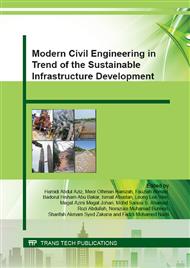p.419
p.425
p.431
p.437
p.443
p.448
p.454
p.460
p.466
H2S Emissions within Vicinity of Swine Farming Area in Nibong Tebal, Pulau Pinang, Malaysia
Abstract:
Animal farming industries is important in Malaysia because its contribution to the economy. The production causes all the major environmental negative impact such as water pollution from waste water and malodours emanating from farms. The current methods of disposing of manures were no longer adequate or suitable for the new, large and intensive animal farming. Inappropriate technologies, poor maintenance and inadequate dimensions and design of the treatment systems in addition to inappropriate production method are causing serious environmental problems especially odorous emissions. Present of Hydrogen Sulphide (H2S) in the air contribute to the odour pollution. Static monitoring has been done and maximum concentration of H2S is 220.6 ppb. Temperature and relative humidity fluctuations were seem to have influence on concentration of H2S. Linear regression analysis was shown that relative humidity has higher influence on correlation gaseous pollution compared to temperature. Correlation coefficient for H2S and relative humidity was in range 0.675 to 0.881 in the morning and 0.417 to 0.729 in the evening, which are in range of strong correlations.
Info:
Periodical:
Pages:
443-447
Citation:
Online since:
October 2015
Price:
Сopyright:
© 2015 Trans Tech Publications Ltd. All Rights Reserved
Share:
Citation:


